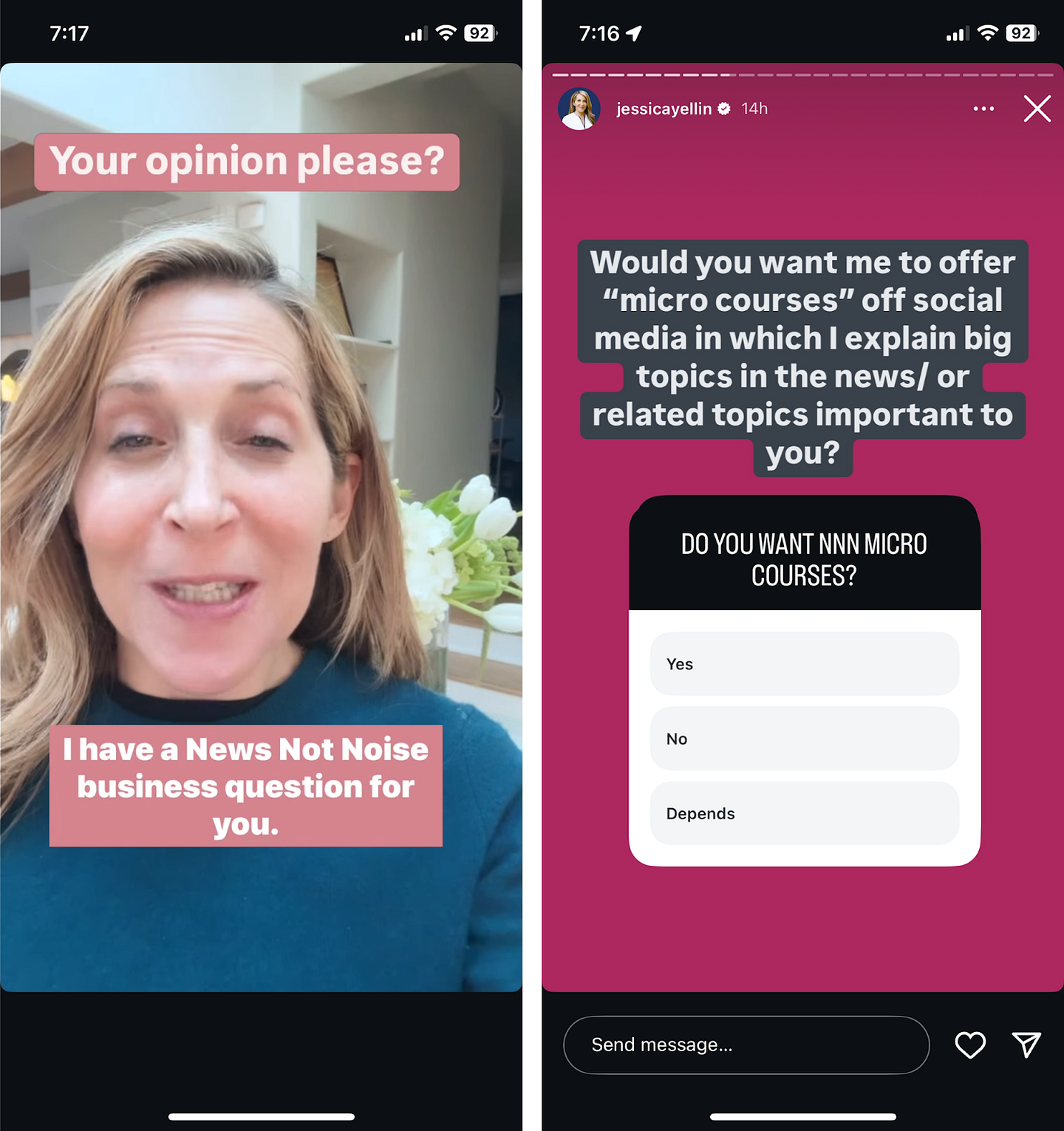
News influencers have become trusted informers – and journalists should take note
Trust Tips: Notice how news influencers format content
In last week’s newsletter, we looked at the tone and style of content creators who share journalism on platforms like YouTube, Substack, Instagram and TikTok. Specifically, we pointed out some things we think really work in these three areas:
- Talking about who you are
- Being authentic
- Explaining your value
Today let’s look more specifically at four content strategies that are common with creator journalists. We invite you to think about how they might be helpful in your coverage of any type, on any platform.
This is part of a series of questions we’re asking alongside Project C’s Liz Kelly Nelson about the role of creator journalists in the media landscape.
1. It’s efficient and useful
One key draw of a lot of social-first information is that its coverage will focus on clarity, often answering a key question, explaining one issue, or talking through the top headlines of the day. The point is to be useful, not to share every bit of nuance and detail. There’s also a sense that you’re talking to a smart friend who understands and respects your time and attention span. Whatever they have to say, they’ll be economical with their words.
This video from Lisa Remillard on TikTok is a great example. In three minutes, she explains the constitutional basis for presidential pardons, why they’re often controversial and how President Biden’s pardon of his son compares to actions from previous presidents. She also covers basic facts without being condescending. The post is useful as either an introduction or a refresher.
2. It’s consistent and sets clear expectations
Creators often have a clear rhythm and pacing, which make it easier for people to build habits around their channels. They share one newsletter a week, or post one video a day. Another thing they’re clear about is the value they offer and the range of things they talk about. To put it another way: They’re clear what their lane is and deliver on it routinely.
Kyla Scanlon is a good example of this. She describes her Substack as “human-centric economic analysis to help all of us understand the world better.” And posts like this one about bitcoin demonstrate how she routinely, consistently helps people understand how the economy works.
3. It’s entertaining and human
The personal delivery style of creator journalism often involves an authenticity around who they are as people and a deep understanding of the ecosystem they’re in. They use the tools of the platforms engagingly. They insert moments of levity and reminders to put your phone down and breathe. They spark connection, which builds trust.
Here’s an example from Bisan Owda, who won both a Peabody and an Emmy for her first-person reports from Gaza. In a short Instagram video, Owda talks about how grateful she is to have been given a free hot sandwich, sharing a moment of humanity while in the middle of Gaza.
4. It invites input and responds to it
Part of social journalism is two-way conversation, right? We know this, yet way too much of traditional journalism still treats social platforms as distribution channels and shows no signs that it is engaging with or being responsive to its audience. Journalist creators are more likely to ask for audience input and then reflect it back to the public. That might be asking questions about coverage preferences. It might be asking people with specific expertise to share opinions. Or it might be soliciting, and then re-sharing, pictures of dogs.
Jessica Yellin of News Not Noise routinely invites questions, opinions and dog photos. This week, she said she was considering a new offering — paid micro courses on specific topics — and asked people to weigh in on what topics they’d like to see covered and how much they might be willing to pay. This is done in a more personal way than news outlets often do it — viewers feel like they’ll be doing her a favor if they weigh in. And her pattern is to share back what she hears, which makes people feel both like she’s listening and like they might be included in a future story.

Let us know who you follow!
We would love to hear about any specific journalist creators or influencers you follow! In our work with creators, we’re continually looking to follow and connect with more creators doing it right. Reply to this email and let us know!
At Trusting News, we learn how people decide what news to trust and turn that knowledge into actionable strategies for journalists. We train and empower journalists to take responsibility for demonstrating credibility and actively earning trust through transparency and engagement. Learn more about our work, vision and team. Subscribe to our Trust Tips newsletter. Follow us on Twitter and LinkedIn.

Executive Director Joy Mayer (she/her) founded Trusting News in 2016 after a 20-year career in newsrooms and teaching. She lives in Sarasota, Florida, and can be reached at joy@TrustingNews.org.



